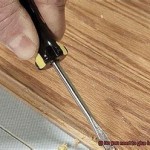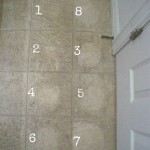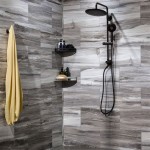Asian Walnut Acacia Prefinished Hardwood Flooring: A Comprehensive Overview
Asian Walnut Acacia prefinished hardwood flooring has become a popular choice for homeowners and builders seeking a blend of durability, aesthetic appeal, and relative affordability. This type of flooring combines the natural beauty of acacia wood with the convenience of a factory-applied finish, offering a compelling alternative to traditional hardwood options.
Acacia, also known as Asian Walnut or Mongolian Walnut, is a genus of trees and shrubs belonging to the Fabaceae family. While the name "Asian Walnut" suggests a relation to walnut species, acacia is a distinct wood type with its own unique characteristics. Its inherent strength and distinctive grain patterns make it well-suited for flooring applications. The prefinished aspect signifies that the wood planks have undergone sanding, staining, and sealing processes in a controlled factory environment, eliminating the need for on-site finishing and reducing installation time and mess.
This article provides a detailed exploration of Asian Walnut Acacia prefinished hardwood flooring, encompassing its key features, benefits, considerations regarding installation and maintenance, and factors influencing its cost and market position.
Understanding the Characteristics of Acacia Wood
Acacia wood is defined by several key characteristics that contribute to its suitability as a flooring material. These include its hardness, grain patterns, color variations, and dimensional stability. Understanding these attributes is crucial for making informed decisions about whether Asian Walnut Acacia flooring aligns with specific needs and preferences.
Hardness and Durability: Acacia is generally considered a hardwood, scoring respectably on the Janka hardness scale. The Janka hardness test measures the resistance of a wood sample to indentation. While specific Janka ratings can vary depending on the acacia species, most Asian Walnut varieties exhibit a higher rating than softer woods like pine and even some varieties of oak. This inherent hardness translates to greater resistance to dents, scratches, and everyday wear and tear, making it a practical choice for high-traffic areas within a home or commercial space. The hardness contributes significantly to the flooring's longevity, reducing the frequency of refinishing or replacement.
Grain Patterns and Aesthetics: One of the most appealing aspects of Asian Walnut Acacia flooring is its pronounced and varied grain patterns. The wood often exhibits swirling, contrasting patterns that add visual interest and a unique character to each plank. This natural variation means that no two floors will look exactly alike, contributing to a custom, organic feel. The grain patterns can range from subtle and refined to bold and dramatic, allowing homeowners to select options that complement their design aesthetic. These patterns provide a design element that can hide minor scratches and imperfections, further enhancing the flooring's long-term appearance.
Color Variations: Asian Walnut Acacia displays a range of natural color variations, typically spanning from light golden browns to deeper reddish-brown hues. These variations are inherent to the wood and are part of its inherent charm. The prefinishing process allows manufacturers to enhance or modify these natural colors through staining, offering a wider spectrum of tones to suit various design preferences. Staining can accentuate the grain patterns, create a more uniform appearance, or introduce contemporary color trends. The natural color contrasts and variations within the wood add depth and richness to the flooring.
Dimensional Stability: Dimensional stability refers to a wood's resistance to expansion and contraction in response to changes in humidity and temperature. Acacia wood generally demonstrates good dimensional stability, making it less prone to warping or cracking compared to some other hardwood species. However, like all wood flooring, it is still susceptible to movement under extreme environmental conditions. Proper acclimation of the flooring to the installation environment prior to installation is crucial to minimize potential issues. Maintaining consistent humidity levels within the space via climate control systems is also recommended to ensure the long-term stability and performance of the flooring.
Advantages of Prefinished Hardwood Flooring
Choosing a prefinished hardwood option like Asian Walnut Acacia offers numerous advantages compared to unfinished hardwood that requires on-site sanding, staining, and sealing. These benefits span from installation efficiency to environmental considerations and overall long-term value.
Faster and Cleaner Installation: Prefinished flooring significantly reduces installation time and complexity. Because the finishing process is completed in a controlled factory environment, the planks are ready to be installed immediately upon arrival. This eliminates the need for several days of on-site sanding, staining, and sealing, minimizing disruption to the household or business. Furthermore, prefinished flooring eliminates the dust, fumes, and odors associated with on-site finishing, creating a cleaner and healthier installation process. The rapid installation reduces labor costs and allows for a quicker project turnaround time.
Consistent Finish Quality: Factory-applied finishes are typically more durable and consistent than those applied on-site. Prefinishing utilizes advanced application techniques and high-quality coatings, resulting in a uniform finish with superior scratch resistance and UV protection. The controlled environment in the factory ensures optimal curing conditions, leading to a harder and more long-lasting finish. The prefinished surface is more resistant to stains, spills, and everyday wear, contributing to the flooring's longevity and ease of maintenance. Homeowners can be confident in the consistent color and sheen across the entire floor surface.
Cost-Effectiveness: While the initial cost of prefinished flooring may be slightly higher than unfinished options, the long-term cost-effectiveness can be significant. The labor costs associated with on-site sanding, staining, and sealing can often outweigh the difference in material costs. The faster installation time also reduces overall project expenses. Furthermore, the increased durability and longevity of the prefinished hardwood translates to lower maintenance costs and a reduced need for refinishing over the lifespan of the flooring, contributing to overall cost savings over time. The consistent finish quality minimizes the likelihood of imperfections or uneven application.
Reduced Environmental Impact: The prefinishing process often takes place in facilities with advanced emission control systems, minimizing the release of volatile organic compounds (VOCs) into the environment. This is in contrast to on-site finishing, which can release substantial amounts of VOCs into the air. Furthermore, prefinished flooring can reduce waste generated during the installation process. The precise application of finishes in a factory setting minimizes material waste and ensures that resources are used efficiently. Selecting prefinished flooring that is certified by organizations like the Forest Stewardship Council (FSC) can further ensure that the wood is sourced from sustainably managed forests.
Considerations for Installation and Maintenance
While Asian Walnut Acacia prefinished hardwood flooring offers numerous benefits, proper installation and ongoing maintenance are crucial for ensuring its long-term performance and aesthetic appeal. Careful attention to these aspects will maximize the flooring's lifespan and minimize potential problems.
Proper Acclimation: Before installation, the flooring must be properly acclimated to the environment in which it will be installed. This involves allowing the planks to adjust to the temperature and humidity levels of the room for a specific period of time, typically several days. Acclimation minimizes the potential for expansion or contraction after installation, which can lead to warping, cracking, or gapping. Follow the manufacturer's recommendations for acclimation time and procedures. Proper acclimation is a crucial step in preventing future issues with the flooring's stability.
Subfloor Preparation: The subfloor must be clean, dry, level, and structurally sound before installing the flooring. Any imperfections or irregularities in the subfloor can telegraph through to the finished floor, creating unevenness or instability. Repair any cracks, holes, or loose areas in the subfloor. Ensure that the subfloor is properly moisture-tested to prevent moisture-related problems. A level and solid subfloor is essential for a successful and long-lasting flooring installation.
Installation Method: Prefinished hardwood flooring can be installed using various methods, including nailing, gluing, or floating. The choice of installation method depends on the specific product, subfloor type, and personal preferences. Nailing is a traditional method that provides a secure and stable installation. Gluing provides a more solid and quiet floor with minimal movement. Floating involves assembling the planks without directly attaching them to the subfloor, allowing for movement and flexibility. Consult with a professional installer to determine the best method for the specific situation.
Regular Cleaning and Maintenance: Regular cleaning is essential for maintaining the appearance and longevity of the flooring. Sweep or vacuum the floor regularly to remove dirt, dust, and debris. Use a damp mop with a pH-neutral cleaner specifically designed for hardwood flooring. Avoid using excessive water, as it can damage the wood. Promptly clean up spills to prevent staining or water damage. Use rugs or mats in high-traffic areas to protect the floor from wear. Regular maintenance will extend the life of the flooring and preserve its beauty.
Refinishing Considerations: While prefinished hardwood flooring is durable, it may eventually require refinishing to restore its original luster. The frequency of refinishing depends on the amount of traffic, the level of care, and the quality of the original finish. Refinishing involves sanding down the existing finish and applying a new coat of sealant. Prefinished floors can typically be sanded and refinished multiple times, extending their lifespan significantly. Consult with a professional refinisher to assess the condition of the floor and determine the best course of action.
In summary, Asian Walnut Acacia prefinished hardwood flooring offers a compelling combination of aesthetic appeal, durability, and ease of installation. By understanding the characteristics of acacia wood, recognizing the advantages of prefinished flooring, and prioritizing proper installation and maintenance, homeowners can enjoy the beauty and value of this flooring option for years to come.

Chesapeake Flooring Asian Walnut Acacia Natural Hurst Hardwoods

Acacia Asian Walnut Natural Prefinished Hardwood Wood Flooring Floor Sample

Chesapeake Flooring Asian Walnut Acacia Vintage Hurst Hardwoods

Acacia Asian Walnut Natural Prefinished Hardwood Wood Flooring Floor Sample For

Chesapeake Flooring Asian Walnut Acacia Dusky Hurst Hardwoods

Asian Walnut Hardwood Flooring Hank S Carpet Inc

Acacia Asian Walnut Natural Prefinished Hardwood Wood Flooring Floor Sample For

Asian Walnut Hardwood Flooring Hank S Carpet Inc

5 Acacia Walnut Handsc Hardwood Wood Flooring Floor Sample

3 Prefinished Solid Asian Walnut Acacia Wood Hardwood Floor Flooring Eleganceplyquet
Related Posts








